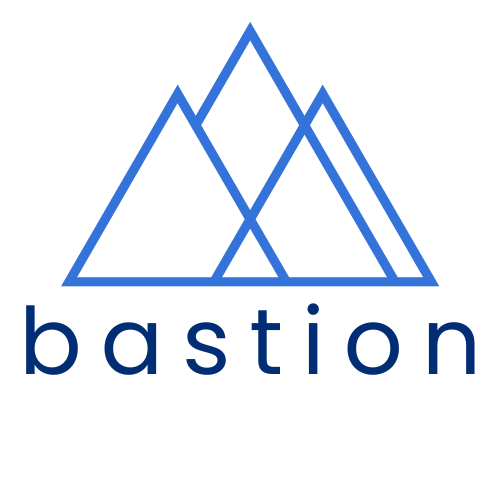Stakeholder Mapping and Visualization

Competency: Assess and visualize affected and influential audiences for a particular policy goal and describe their roles within the broader situation analysis
Understanding Stakeholder Mapping
Stakeholder mapping is the systematic process of identifying, analyzing, and visualizing all the actors who either affect or are affected by a specific policy goal. Think of it as creating a detailed landscape map before beginning a journey—you need to understand the terrain, identify key landmarks, and plot potential routes to your destination.
Effective stakeholder mapping serves three critical functions: it ensures you don't overlook important actors who could help or hinder your objectives, it reveals relationships and influence patterns that aren't immediately obvious, and it provides a foundation for strategic planning by showing how different stakeholders connect to your policy goals.
The Two-Dimensional Framework
Stakeholder mapping typically uses two key dimensions to categorize actors:
Affected vs. Influential: Some stakeholders are primarily affected by your policy (citizens whose lives will change, businesses that must adapt to new regulations), while others primarily influence whether the policy succeeds (decision-makers, opinion leaders, veto players). Many stakeholders fall into both categories, but understanding which dimension is primary helps determine engagement strategies.
Direct vs. Indirect: Direct stakeholders have immediate, obvious connections to your policy goal. Indirect stakeholders may be connected through secondary effects, alliance relationships, or broader systemic impacts. Missing indirect stakeholders often explains unexpected policy failures.
Visualization Techniques
Effective stakeholder maps use visual representation to reveal patterns that aren't apparent in lists or descriptions. Common approaches include influence network diagrams (showing who influences whom), stakeholder matrices (plotting influence against support/opposition), relationship maps (showing formal and informal connections), and ecosystem diagrams (showing how stakeholders relate to the policy issue and each other).
The key insight: visualization isn't just about making pretty diagrams. It's about forcing yourself to think systematically about relationships and revealing blind spots in your understanding. If you can't draw the stakeholder landscape clearly, you probably don't understand it well enough to navigate it effectively.
Example in Practice
Imagine mapping stakeholders for a renewable energy cooperation initiative. Your map might reveal that environmental NGOs (highly affected, moderately influential) connect to both government environmental agencies (moderately affected, highly influential) and international development banks (indirectly affected, highly influential through financing). You might discover that labor unions (highly affected through job transitions, moderately influential through political relationships) have concerns that weren't initially obvious but could derail implementation if not addressed.
Without systematic mapping, you might focus solely on energy ministries and environmental groups while missing the labor dimension, or fail to recognize that development bank financing requirements could shape the entire initiative's feasibility.
Practitioner Diagnostic Tools
When stakeholder landscapes become complex—involving multiple policy areas, cross-border dynamics, or rapidly changing political environments—use these frameworks to maintain analytical clarity.
Stakeholder Mapping Assessment Checklist
Comprehensiveness Evaluation:
□ Have you identified stakeholders across all relevant sectors (government, civil society, private sector, international)?
□ Are you mapping both formal and informal actors?
□ Have you considered stakeholders at different levels (local, national, regional, global)?
□ Are you including both supporters and opponents?
□ Have you identified potential spoilers or veto players?
Relationship Analysis:
□ Have you mapped both formal relationships (institutional partnerships, reporting lines) and informal relationships (personal networks, ideological alignments)?
□ Can you identify key brokers or connectors who link different stakeholder communities?
□ Are you tracking alliance patterns and potential coalition opportunities?
□ Have you identified conflicting relationships that might create tensions?
□ Are you aware of historical relationships that might affect current dynamics?
Dynamic Assessment:
□ Are you tracking how stakeholder positions and influence levels change over time?
□ Have you identified emerging stakeholders who might become important?
□ Are you monitoring for stakeholder exits or engagement withdrawals?
□ Can you anticipate how your policy initiative might reshape stakeholder relationships?
□ Are you updating your map as new information becomes available?
Advanced Mapping Strategies
Layered Analysis: Create multiple maps showing different dimensions—influence patterns, alliance structures, communication networks, resource flows—then overlay them to identify key insights.
Scenario Mapping: Map how stakeholder alignments might shift under different scenarios (policy success, failure, partial implementation, external shocks).
Power Analysis: Distinguish between formal authority, informal influence, resource control, and network position to understand different types of stakeholder power.
Coalition Potential Assessment: Identify stakeholders who might work together effectively despite not currently being aligned, based on shared interests or complementary capabilities.
Getting Unstuck: Common Scenarios
"The stakeholder landscape is too complex to map clearly": Start with core stakeholders directly connected to your policy goal, then work outward in concentric circles. Don't try to map everything at once.
"Stakeholder positions keep shifting": This is normal in dynamic environments. Focus on mapping underlying interests and capabilities rather than just current positions, and build regular updating into your process.
"We can't figure out who really has influence": Look for patterns in who gets consulted, who initiates discussions, who others refer to as important, and who has historically driven change on similar issues.
"Stakeholders seem disconnected from each other": This might indicate an opportunity to create new connections or coalitions, or it might suggest you're missing important linking actors or informal networks.
Possible Stakeholder Role Categories
Champions: Strong supporters who actively promote your objectives
Allies: Supportive but may need encouragement to take action
Neutrals: Uncommitted but potentially persuadable
Skeptics: Concerned but potentially manageable through engagement
Opponents: Actively working against your objectives
Blockers: Have veto power and are likely to use it
Understanding not just who stakeholders are, but what role they play in your specific context, enables more targeted engagement strategies.
Cross-References: This competency builds on Competency Six (strategic listening) and Competency Two (local context analysis), while enabling Competency Eight (behavioral change requirements), Competency Ten (priority audience identification), and Competency Eleven (audience prioritization).
